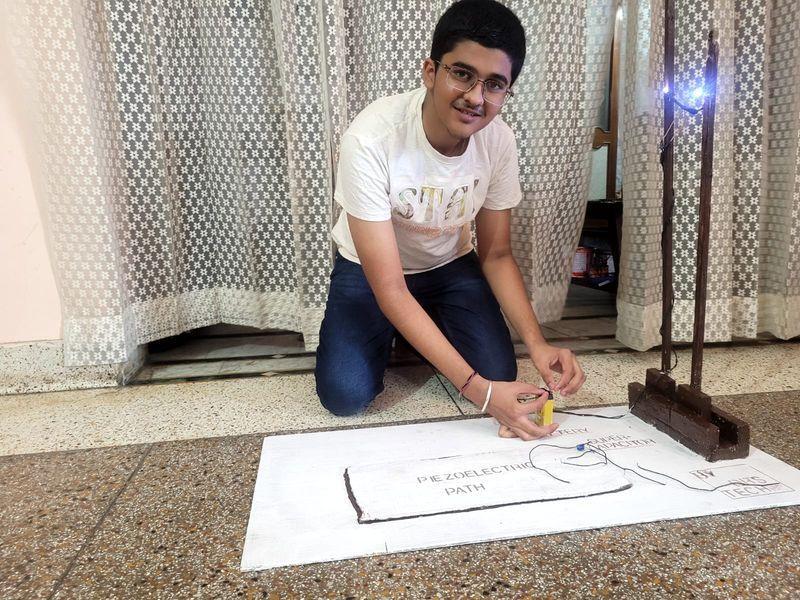
Hoshiarpur Student Builds Device to Generate Power from Footsteps
In a remarkable display of innovation and ingenuity, a Class 8 student from Hoshiarpur, Punjab, has created a device that harnesses the energy generated by a simple act – walking. Sanchit, the young student, has developed a project called “Power beneath our feet” that uses piezoelectric technology to convert footsteps into electricity. This groundbreaking invention has caught the attention of local officials, scientists, and enthusiasts alike, and is set to revolutionize the way we think about power generation.
The concept of harnessing energy from human movement is not new, but Sanchit’s device takes it to a whole new level. The device, which is still in its prototype phase, consists of a series of sensors embedded in a special mat. These sensors detect the pressure and movement of footsteps, and convert them into electrical energy. This energy can then be used to power small devices such as mobile phones, lamps, or even entire homes.
The idea for the project came to Sanchit when he was exploring ways to generate power without relying on traditional fossil fuels. He was inspired by the concept of piezoelectricity, which is the ability of certain materials to generate an electric charge when subjected to mechanical stress, such as pressure or vibration. Sanchit realized that this technology could be used to harness the energy generated by human movement, and set out to create a device that would make it possible.
The process of developing the device was not without its challenges. Sanchit had to conduct extensive research on piezoelectric materials and their properties, as well as design and build the prototype. He also had to ensure that the device was safe, efficient, and easy to use.
Despite the challenges, Sanchit’s hard work paid off. The prototype device has been tested and proven to generate a significant amount of electricity from even the slightest movement. This has the potential to have a major impact on the way we generate power, particularly in areas where traditional energy sources are scarce or unreliable.
The response to Sanchit’s invention has been overwhelming. Local officials, scientists, and enthusiasts have all been impressed by the young student’s ingenuity and creativity. The device has also generated a lot of interest from environmental groups and organizations focused on sustainable energy.
Sanchit’s invention is not just a novelty – it has the potential to make a real difference in people’s lives. Imagine being able to power your home or device simply by walking around the room. This technology could be particularly beneficial for people living in areas with limited access to traditional energy sources, such as remote communities or disaster-stricken areas.
The implications of Sanchit’s invention are far-reaching. It has the potential to revolutionize the way we think about power generation, and could play a significant role in reducing our reliance on fossil fuels. As the world continues to grapple with the challenges of climate change and energy sustainability, inventions like Sanchit’s are a beacon of hope.
Sanchit’s achievement is not just a testament to his own hard work and dedication, but also to the importance of encouraging innovation and creativity in young people. His story serves as a reminder that even the most seemingly impossible ideas can become a reality with determination and perseverance.
As Sanchit continues to refine his invention and explore its potential, it will be exciting to see where his journey takes him. Will his device become a reality, and if so, what impact will it have on our daily lives? Only time will tell, but one thing is certain – Sanchit’s invention has the potential to change the world.






